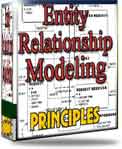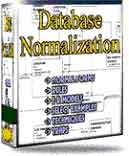 |
||
|
|
Software tools | Programming tips | Database fundamentals Using an Oracle ref cursor in JavaHow can you use an Oracle ref cursor in Java?On a previous page, I showed you how to write a function that returns an Oracle ref cursor. Now let's see how you can use it in your Java applications: Java example codeimport java.sql._.css; import java.util._.css; /** * A simple sample class to illustrate how to use Stored Procedures/functions, * and use an Oracle ref cursor in Java. * To use the sample code - you will have to create a Connection object, * and pass it as a parameter in the constructor of the class. */ public class AccountManager extends Object { Connection dbConnection; public AccountManager(Connection connection) { dbConnection = connection; } /** * Get all accounts for for a given interval. * @param int fromAccount - First account. * @param int toAccount - Last account. * @return Returns an ArrayList with String-objects for all accounts in a given intervall. * @throws Exception */ public List getAccountInterval(int fromAccount, int toAccount) throws Exception { //Prepare the call to the stored function. CallableStatement cstmt = dbConnection.prepareCall("{? = call GetRefCursors.sfGetAccountInterval(?, ?)}"); cstmt.setFetchSize(100); //The statement will return a "ref cursor" - or a ResultSet in Java terms... cstmt.registerOutParameter(1, oracle.jdbc.driver.OracleTypes.CURSOR); //Set the stored function's in parameters cstmt.setInt(2, fromAccount); cstmt.setInt(3, toAccount); //... and call the stored function... cstmt.executeQuery(); //Get the ResultSet ResultSet rs = (ResultSet) cstmt.getObject(1); //Create a list to hold the account information. List accounts = new ArrayList(); //Iterate the ResultSet to fetch the accounts. while (rs.next()) { //Put information about each account into the list. accounts.add(rs.getString("account_no") + " - " + rs.getString("name")); } //And then we tidy up by closing the ResultSet and the Statement. rs.close(); cstmt.close(); //Return the newly created list of accounts. return accounts; } } Now, this should hopefully set straight how you
can utilize an Oracle ref cursor in Java. Feel free to print this out
for your convenience. Other important resources on this site: Oracle DBA |
Exclusive interviews with:
Free eBookSubscribe to my newsletter and get my ebook on Entity Relationship Modeling Principles as a free gift: What visitors say...
"I just stumbled accross your site looking for some normalization theory and I have to say it is fantastic.
Read more
Testimonials
I have been in the database field for 10+ years and I have never before come across such a useful site. Thank you for taking the time to put this site together." Mike, USA |
|
Theory & Practice
DB Normalization Analysis Phase Database Keys DB Glossary Appl.Architecture Oracle DBA MySQL DBA SQL Server DBA Install Oracle Install SQL Server Proj.Management Oracle Constraint Programming Tips Database Normalization eBook: |
||
|
Copyright © www.databasedesign-resource.com /
All rights reserved. All information contained on this website is for informational purposes only. Disclaimer: www.databasedesign-resource.com does not warrant any company, product, service or any content contained herein. Return to top
The name Oracle is a trademark of Oracle Corporation. |
||